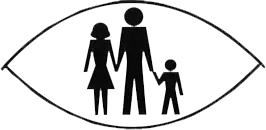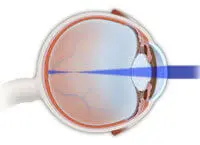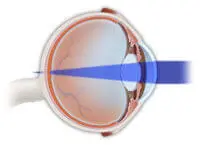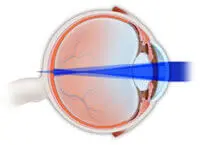

Our Office Has Moved!
Visit Us at Our New Location:
Newport Beach, CA 92663


Our Office Has Moved!
Visit Us at Our New Location:
What is perfect vision? It is a refractive state known as emmetropia. Light from the distance (greater than 20 feet away), carrying information about your surroundings, is focused precisely on the retina. When emmetropia is present, light naturally falls on the retina. No effort is required to achieve this vision. The laws of physics and biology determine the best vision that can be obtained by a human being. In the absence of eye disease, the more precisely the image is focused on the retina, the closer you come to perfection. When near vision is desired, the eye expends energy on the process of accommodation. This changes the focus of the eye so that the image of a near object such as a smartphone can be focused on the retina. If you don't have perfect vision, the images are not focused on the retina, and are blurred. The degree of blur is related to how far off of the retina the images are focused.
Blurred vision, when not caused by eye disease, is most commonly caused by refractive errors. These are known as myopia, hyperopia, astigmatism and presbyopia. The refractive state of the eye is determined by what combination of refractive errors you have.
During an eye examination at Dr. Reiter's office, the refractive state of your eye is determined. When this is done, a unique, mathematical formula is derived that describes your personal refractive errors and what has to be done to correct them. When an eye condition, such as a cataract or pterygium is present that interferes with this correction, its presence and significance is evaluated and treatment discussed.
Once your formula is derived, the functional significance, if any, of your refractive state is explored. If blurred vision interferes with your daily activities and you wish to function better, Dr. Reiter will discuss the treatment options that are available with you. These may include eyeglasses, contact lenses, laser refractive surgery or lens based surgery. The more accurate these treatments can be accomplished, the closer to perfection you will become. Dr. Reiter specializes in the creation of Hi Definition Vision.

Myopia, often referred to as near-sighted, occurs when the eye is too strong and focuses distant images before they can get to the retina. This causes distance vision to be blurred and near vision to be clearer. It is associated with an increased incidence of retinal detachment, macular degeneration and glaucoma. This is true even if a myopic eye has been converted to emmetropia with laser or lens based surgery. If you have myopia, you need periodic examinations throughout life for adequate disease prevention.

Hyperopia, also known as far-sighted, occurs when your eye is too weak and focuses distant images behind your retina. In order to make light focus on your retina, energy must be exerted so that accommodation can be used to make your eye more powerful and able to focus light in a shorter distance. Not all hyperopic eyes are able to do this for long periods of time. It is like a marathon run for the eyes. Vision may be initially clear as the effort to read begins, but may blur after reading for a while as fatigue sets in. This causes tired eyes and headaches. In this condition, distant images are clearer and near images are blurry. Hyperopic eyes are often at higher risk of narrow angle glaucoma attacks, lazy eyes and crossed eyes.

Astigmatism is a refractive error in which images are focused to several different points, so it is spread out around the retina. When the light is focused to several points in front of the retina, it is called myopic astigmatism. When focused behind the retina, it is called hyperopic astigmatism. To correct astigmatism, the different focal points must all be redirected so they converge on the retina. This requires a special, custom corrective lens or surgical procedure. If this is not done, a special kind of blurred vision occurs. The blur is specific to the shape of the image being viewed; different letters of the alphabet and different shaped images blur in different ways, so that some shapes are seen better than others. Usually vision is worse at night.
Presbyopia is the loss of the ability to focus on the near area where material is held for reading. This ability to focus at near is called accommodation. Presbyopia frequently comes on gradually around the age of 40. It is thought to be caused by changes in the structure of the crystalline lens of the eye. The ciliary muscle of the eye normally contracts when you accommodate. This changes the shape of the lens and brings the distance focus to near. When presbyopia begins, this muscle contraction produces less of a change in the lens shape and you become more dependent on reading glasses. As you age, this process continues until efficient spectacle-free focusing at near is all but lost. Dr. Reiter specializes in the restoration of the ability to see at near without glasses. Please contact our office for an evaluation.

